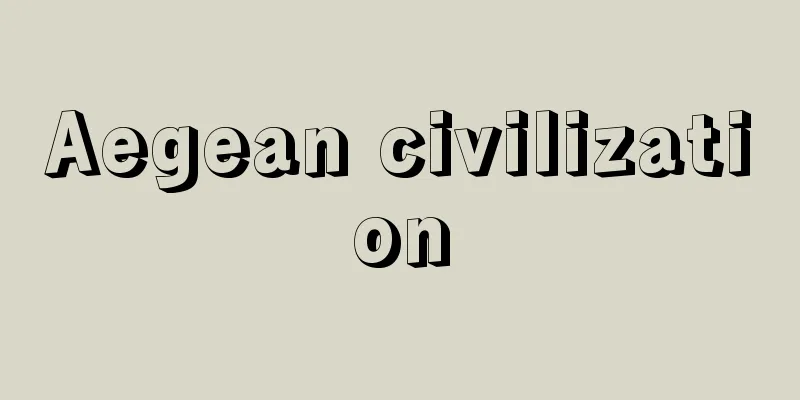Stairs - kaidan (English spelling) stair

|
A stepped passageway that connects different levels of roads, squares, or buildings. In addition to its functional role as a passageway, it is an important element in the design of architecture and cities. The materials used for construction are often stone, concrete, or steel outdoors, and sometimes earthen steps with stone or wood retaining walls are also used. Indoors, stone, concrete, steel, or wood are used, but in recent years, glass and plastic are also used. Light alloys such as duralumin are used in airplanes. The main structure, except for those built directly on the ground, consists of a girders (also called sasarageta or wakigeta), footboards, and risers, and in all cases, handrails are often attached. For the finishing of the treads, boards, plastic tiles, and carpets are used in residential buildings, while stone, plastic tiles, ceramic tiles, and carpets are used in public buildings, and stone, concrete, ceramic tiles, bricks, and earth are used outdoors. For temporary structures, iron and wood are often used. For safety reasons, anti-slip metal fittings are often installed on the edges of the tread, and in the case of tiles, anti-slip grooves are used. The number of stairs, width, tread and riser dimensions are regulated by the Building Standards Act Enforcement Order. In addition, to ensure that the height of stairs does not exceed 3 meters, if the difference in height between the two parts where the stairs are to be installed is 3 meters or more, it is regulated that the stairs must be nailed to a flat area called a landing in the middle. In terms of shape, straight staircases are used in train stations, building entrances, and pedestrian bridges where the flow of people is taken into consideration; full-fold staircases are installed in public buildings adjacent to edges or exterior walls; hollow geometric staircases or spiral staircases are used in theaters, department stores, palaces, and other places where visual effect is desired; and spiral staircases are used in small areas. [Hirai Sei] historyIn Japan, in the Yayoi period, stairs with steps carved into a single piece of timber were used along with ladders, and in ancient architecture, stairs made of staggered timbers stacked sideways or with side panels supporting the tread came into use. Outside, brick or stone stairs were used to climb to the base of buildings. After that, there were almost no changes in structure or design, but in the Edo period, box stairs with cupboards or drawers at the bottom were built, which were often used in town houses, and unusual stairs appeared, such as the stairs at Nijo Jinya, which could be pulled up to make the location of the stairs unclear, and the stairs at Choshukaku (in Sankeien Garden, Yokohama), which had curved side panels. Since the Meiji period, there have been many changes, which are due to influences from Europe and the United States. In mainland China, staircases are as unchanging as in Japan, but they are used effectively both inside and outside to symbolize authority. Mainly in palaces, important buildings have high bases and repeatedly use staircases with decorative handrails as a symbolic feature. Furthermore, the central staircase at the front has a huge stone slab carved with a dragon as a passageway for the emperor. Inside the building, staircases are also added to the throne for a similar effect. Beginning around 3000 BC in ancient Mesopotamia, temples with rectangular floor plans built on high platforms were constructed, followed by structures called ziggurat, which consisted of multiple layers of platforms. A ziggurat from the Third Dynasty of Ur, built around 2030 BC, has a magnificent staircase at its front. In ancient Greek architecture, it was common for temples and other structures to have multiple stepped platforms surrounding them, but in subsequent ancient Roman architecture and medieval European architecture and cities, stairs were rarely used symbolically, and were primarily used for practical purposes in churches, castles, palaces, etc. After the Renaissance, stairs again played an important role in cities, parks, and architecture for their visual effects. Examples from the Renaissance to the Baroque period include the stairs of the Spanish Steps and the Capitoline Hill, which characterize the city of Rome, the spiral staircases seen in many castles in the Loire region of France, such as the Grand Staircase of Francis I at the Château de Blois and the central double staircase at the Château de Chambord, the stairs of the Lorenzo Library anteroom (Florence, designed by Michelangelo), which were designed for visual effects, the Scala Regia leading from the side of the facade of St. Peter's Basilica to the Vatican Palace (Rome, designed by Bernini), the staircases that characterize the interior and exterior of the Palace of Versailles (designed by Mansart), and the Staircase of the Palais des Bruxelles (designed by Neumann). The Scala Regia of the Vatican Palace appears longer than it actually is because it narrows in width as it ascends and the height to the vault ceiling decreases, which, combined with the effect of the light, creates a solemn atmosphere. A famous example of 19th century architecture is the grand staircase at the Paris Opera House (designed by Garnier), and in modern architecture, the glass spiral staircases on either end of the front of the model factory office that Gropius exhibited at the Cologne exhibition can be said to symbolize a new architectural beauty. [Hirai Sei] ©Shogakukan "> Names of the different parts of the stairs ©Shogakukan "> Staircase shape Source: Shogakukan Encyclopedia Nipponica About Encyclopedia Nipponica Information | Legend |
|
道路や広場あるいは建造物において、高さの違う部分を結ぶための段形の通路。通路としての機能上の役割のほかに、建築や街を設計するうえで重要な要素となっている。構造材は、屋外では石、コンクリート、鉄が多く、石や木で土止めをした土の階段も用いられることがある。屋内では石、コンクリート、鉄、木で、近年はガラスやプラスチックが用いられることもある。飛行機ではジュラルミンなどの軽合金が使われている。主体となる部分の構造は、地面の上に直接つくられるもののほかは、登り桁(げた)(簓桁(ささらげた)、側桁(わきげた)などという)、踏み板、蹴込(けこ)み板で構成され、いずれの場合も手すりをつけることが多い。踏面(ふみづら)の仕上げには、住宅では板、プラスチックタイル、じゅうたんが、公共的な建築では石、プラスチックタイル、陶磁器タイル、じゅうたんが用いられ、外部では石、コンクリート、陶磁器タイル、れんが、土が使われる。仮設の場合には鉄、木が使われることが多い。踏面の端に安全のために滑り止めの金具を打つことが多くなり、タイルの場合には滑り止めの溝をつけたものが使われる。 階段の個数、幅、踏面および蹴上げの寸法は建築基準法施行令によって規定されている。また、階段の高さが3メートルを超えないように、階段を設ける二つの部分の高低差が3メートル以上ある場合には、途中に踊り場とよぶ平面部分を設けて階段をくぎるように規定されている。 形状は、人の流れを考慮した駅構内、建物などの入口、歩道橋などは直進階段、公共的な建物では端や外壁に接して設けられるので全折れ階段、劇場、デパート、宮殿など視覚効果をねらう場合には中空の幾何的階段や回り階段、面積が狭いところでは螺旋(らせん)階段が使われる。 [平井 聖] 歴史日本では弥生(やよい)時代に梯子(はしご)とともに、1本の角材に段を刻んだものが用いられ、古代の建築では、角材をずらしながら横に重ねた階段や、側板で踏み板を支えた階段が使われるようになった。また、外部では塼(せん)(方形・長方形の厚い平板状の焼成粘土製品)や石の階段が建造物の基壇に登るために用いられている。その後構造的にも意匠的にもほとんど変化がなく、江戸時代になると町屋(まちや)に多く用いられた下部が戸棚や引出しになっている箱階段がつくられたほか、引き上げて階段の所在をわからなくした二条陣屋の階段や、側板を曲線状にした聴秋閣(横浜市の三渓園内)の階段のような特殊なものが現れた。明治以降は変化が激しいが、それは欧米からの影響によるものである。 中国大陸においても階段は日本と同じく変化に乏しいが、外部・内部ともに権威を象徴するために効果的に使われている。主として宮殿において、重要な建物には高い基壇を用い、装飾的な手すりのついた階段を繰り返し象徴的に用いている。さらに正面中央の階段には、皇帝の通路として竜を彫刻した巨大な石の板を敷くなどの手法がみられる。室内においても、玉座に同様な効果をねらった階段がつけられている。 古代メソポタミアでは紀元前3000年ころから、高い基壇の上に建つ長方形平面の神殿がつくられ、さらに何段も基壇を重ねたジッグラトzigguratとよぶ建造物ができた。前2030年ころにつくられたウル第3王朝のジッグラトには正面に壮大な階段がみられる。古代ギリシア建築では、神殿などの周囲を巡って数段の階段状の基壇が用いられるのが常であったが、その後の古代ローマ建築をはじめ、ヨーロッパにおける中世の建築や都市では、階段を象徴的に使うことは少なく、教会堂や城郭、宮殿などでは実用的な性格が強かった。 ルネサンス期以降になると、視覚的効果を求めて都市、公園、建築において階段がふたたび重要な役割を果たすようになる。ルネサンス期からバロック期の例には、ローマの町を特徴づけるスペイン広場やカンピドリオの丘の階段、ブロア城館のフランソア1世の大階段やシャンボール城館の中央の二重階段のようなフランスのロアール地方に建つ多くの城館にみられる螺旋階段、とくに視覚的効果をねらったロレンツォ図書館控え室の階段(フィレンツェ、ミケランジェロ設計)やサン・ピエトロ大聖堂の正面わきからバチカン宮殿に通じるスカラ・レジア(ローマ、ベルニーニ設計)、ベルサイユ宮殿の内外を特徴づける階段(マンサール設計)、ブルックザール宮階段室(ノイマン設計)などがある。バチカン宮殿のスカラ・レジアは、登るにしたがって幅が狭くなり、ボールト天井までの高さが減じていくので実際以上に長く見え、光線の効果と相まって荘重な雰囲気をつくりだしている。19世紀の建築ではパリのオペラ座の大階段(ガルニエ設計)が著名で、近代建築では、グロピウスがケルンの展示会に出品したモデル工場事務所の正面両端に設けたガラス張りの螺旋階段は新しい建築美を象徴するものといえよう。 [平井 聖] ©Shogakukan"> 階段の各部の名称 ©Shogakukan"> 階段の形態 出典 小学館 日本大百科全書(ニッポニカ)日本大百科全書(ニッポニカ)について 情報 | 凡例 |
<<: Gaitan (English spelling) Jorge Eliécer Gaitán
Recommend
Winfield, JR - Winfield
…the American name for polyethylene terephthalate...
Septic arthritis
… [Infectious arthritis] Arthritis is most often ...
Marsyas
…There are various legends about their number, bu...
Grassland soil - Sochidojo
This refers to soil that forms natural grassland (...
Mother Complex
A term referring to excessive attachment or fixati...
Primordium - Healthy
In the embryo of a multicellular organism, this r...
Koganezuka Kofun
Located in Uedai-cho, Izumi City, Osaka Prefectur...
Kinai - Kinai
In China, Korea, and Japan, the name of a special ...
Block gauge (English spelling) block gauge; slip gauge; gauge blocks
A gauge that is the standard for measuring length....
Lobaria retigera (English spelling) Lobaria retigera
… [Hiroyuki Kashiwatani]. … *Some of the terminol...
Agribusiness - agribusiness (English spelling)
Agribusiness is used as a general concept coverin...
Quran - Qur'ān
The fundamental scripture of Islam, written in Ar...
Merkel's disc
…The sensory receptors are as follows, but the di...
Sepia latimanus (English spelling) Sepialatimanus
…Squid [Takashi Okutani]. . . *Some of the termin...
Oyo (fish) - Oyo
...It used to be treated as one species, but in r...




![Landrace [seed] - Landrace](/upload/images/67cd230aa8a27.webp)




